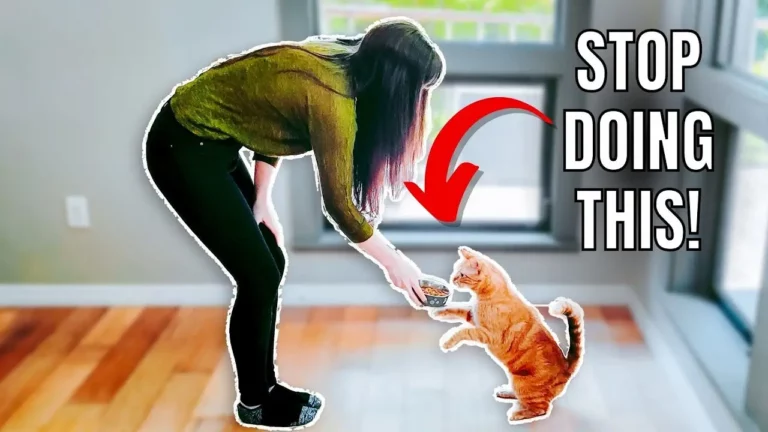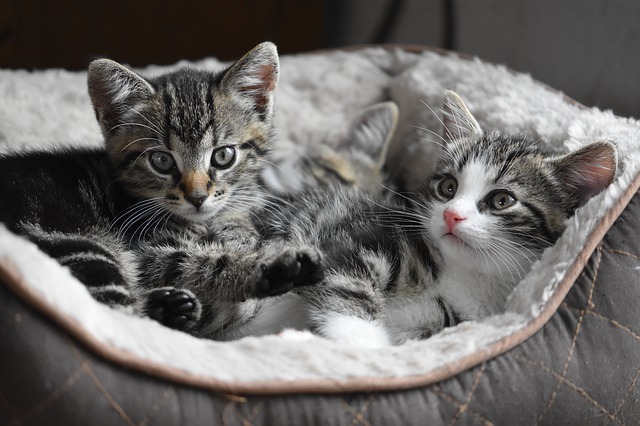Can I Add Water to My Cat's Dry Food?
If you’ve ever wondered whether adding water to your
But there’s more to it than just pouring water over kibble.
While it can make meals more enticing and easier to chew, there are potential downsides like spoilage and nutrient dilution.
So, how do you navigate these benefits and drawbacks effectively?
Let’s explore the best practices and expert opinions to make an informed decision for your
Benefits of Adding Water
Adding water to your
Proper hydration is essential for maintaining kidney health, supporting digestion, and promoting overall well-being.
When you mix water with dry food, it softens the kibble, making it easier for your
Additionally, the enhanced texture and aroma of moistened food can make mealtime more appealing, encouraging your
Another advantage is that adding water to dry food can help reduce the risk of urinary tract issues. Cats that consume more moisture tend to have diluted urine, which can lower the chance of developing crystals or stones.
This can be particularly important for cats prone to such problems.
Potential Drawbacks
While there are many benefits to adding water to your
Wet food left out for too long can attract bacteria, which might upset your
Also, some cats might simply refuse to eat altered food, especially if they’re used to the crunchiness of dry kibble.
Changes in texture and flavor can be off-putting to them.
Here’s a quick look at potential drawbacks:
| Drawback | Description | Potential Solution |
|---|---|---|
| Spoilage | Wet food can spoil quickly, attracting bacteria. | Only add water right before feeding. |
| Refusal to Eat | Cats might not like the changed texture and taste. | Gradually introduce water to their diet. |
| Nutrient Dilution | Excess water can dilute essential nutrients. | Use a measured amount of water. |
| Messiness | Wet food can be messier, requiring more cleanup. | Use a high-sided bowl to contain spills. |
| Dental Health Concerns | Wet food doesn’t help with dental health as dry kibble does. | Supplement with dental treats or toys. |
How to Safely Add Water
To safely add water to your
This guarantees the food doesn’t become too soggy, which might deter your
Use room temperature water, as cats can be sensitive to extreme temperatures. Stir the mixture thoroughly and let it sit for a few minutes to allow the kibble to absorb the water.
Gradually increase the amount of water over several days if your
If you notice any signs of distress or digestive issues, such as vomiting or diarrhea, revert to their original feeding method and consult your veterinarian.
It’s important to maintain good hygiene.
Always discard any uneaten wet food after a couple of hours to prevent bacterial growth. Clean your
Adding water can help with hydration, but it’s vital to do it safely and monitor your
Expert Opinions
Many veterinarians agree that adding water to dry
Cats, by nature, often don’t drink enough water, leading to potential kidney and urinary issues.
By moistening their dry food, you ensure they get extra fluids, helping to keep these essential systems functioning properly.
Experts also note that adding water can make the food more palatable, encouraging picky eaters to consume their meals more readily.
Veterinarians often recommend this practice for older cats or those with dental issues, as softened food is easier to chew and digest.
Additionally, it can aid in weight management, as the added water makes the meal more filling without extra calories.
Some experts advise a ratio of one part water to three parts kibble, but you can adjust based on your
They can provide personalized guidance, ensuring that adding water won’t interfere with any specific dietary requirements or medical conditions.
Conclusion
Adding water to your
Start by gradually mixing small amounts of water right before mealtime, and always monitor your
With careful attention, you can enhance your






